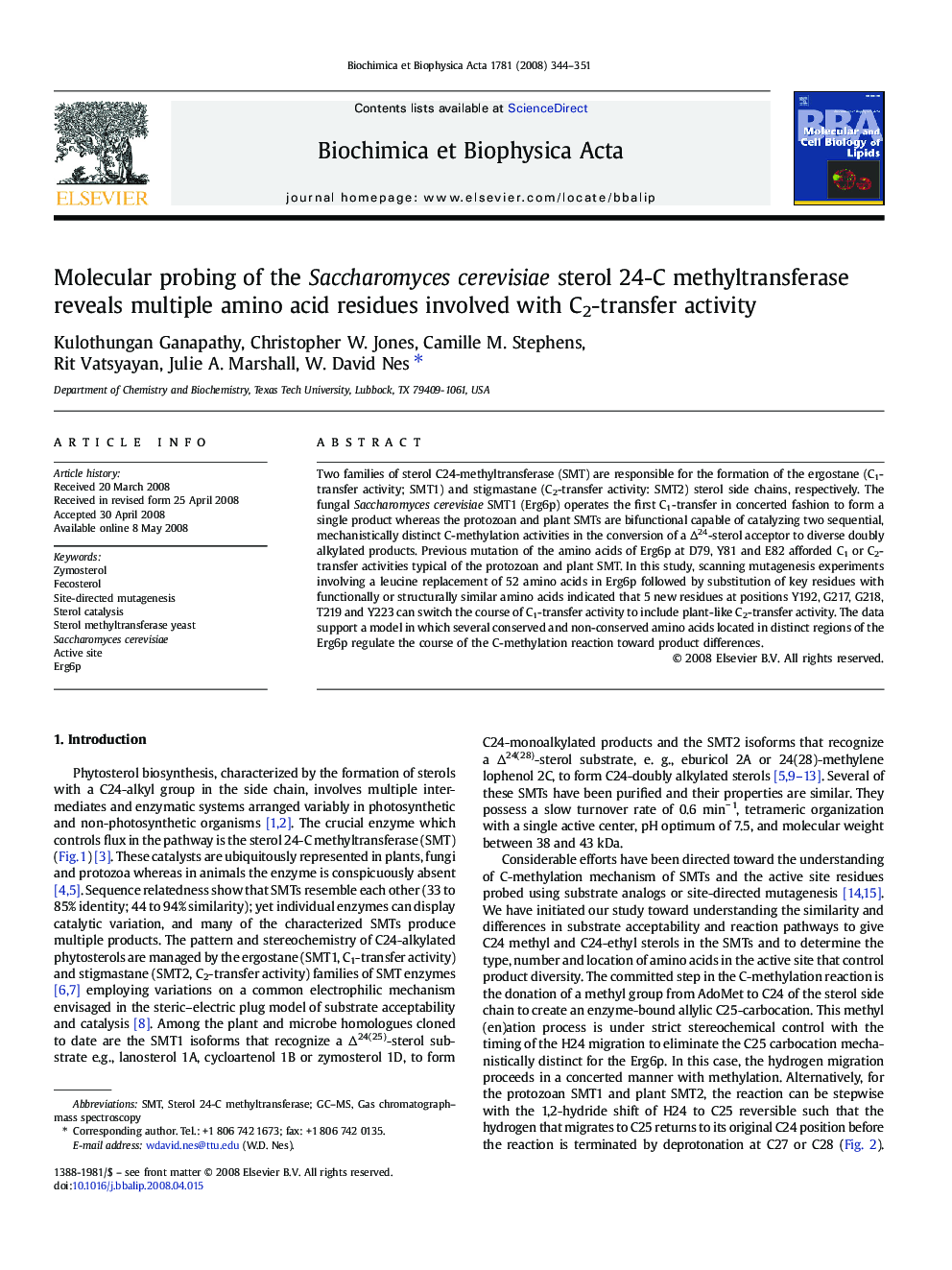| Article ID | Journal | Published Year | Pages | File Type |
|---|---|---|---|---|
| 1949997 | Biochimica et Biophysica Acta (BBA) - Molecular and Cell Biology of Lipids | 2008 | 8 Pages |
Abstract
Two families of sterol C24-methyltransferase (SMT) are responsible for the formation of the ergostane (C1-transfer activity; SMT1) and stigmastane (C2-transfer activity: SMT2) sterol side chains, respectively. The fungal Saccharomyces cerevisiae SMT1 (Erg6p) operates the first C1-transfer in concerted fashion to form a single product whereas the protozoan and plant SMTs are bifunctional capable of catalyzing two sequential, mechanistically distinct C-methylation activities in the conversion of a Î24-sterol acceptor to diverse doubly alkylated products. Previous mutation of the amino acids of Erg6p at D79, Y81 and E82 afforded C1 or C2-transfer activities typical of the protozoan and plant SMT. In this study, scanning mutagenesis experiments involving a leucine replacement of 52 amino acids in Erg6p followed by substitution of key residues with functionally or structurally similar amino acids indicated that 5 new residues at positions Y192, G217, G218, T219 and Y223 can switch the course of C1-transfer activity to include plant-like C2-transfer activity. The data support a model in which several conserved and non-conserved amino acids located in distinct regions of the Erg6p regulate the course of the C-methylation reaction toward product differences.
Related Topics
Life Sciences
Biochemistry, Genetics and Molecular Biology
Biochemistry
Authors
Kulothungan Ganapathy, Christopher W. Jones, Camille M. Stephens, Rit Vatsyayan, Julie A. Marshall, W. David Nes,
